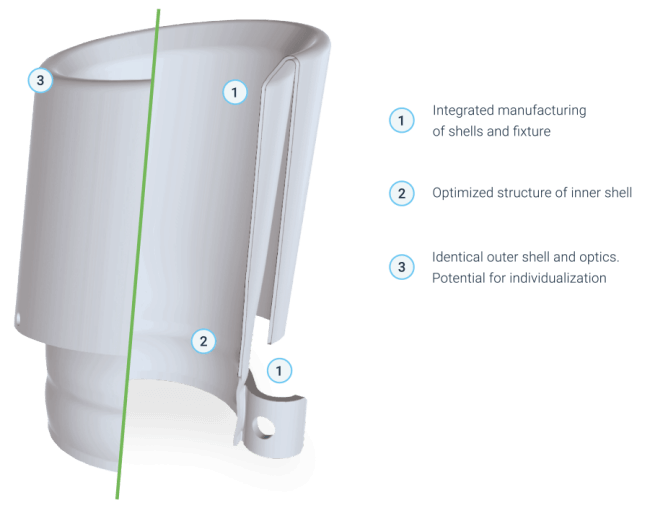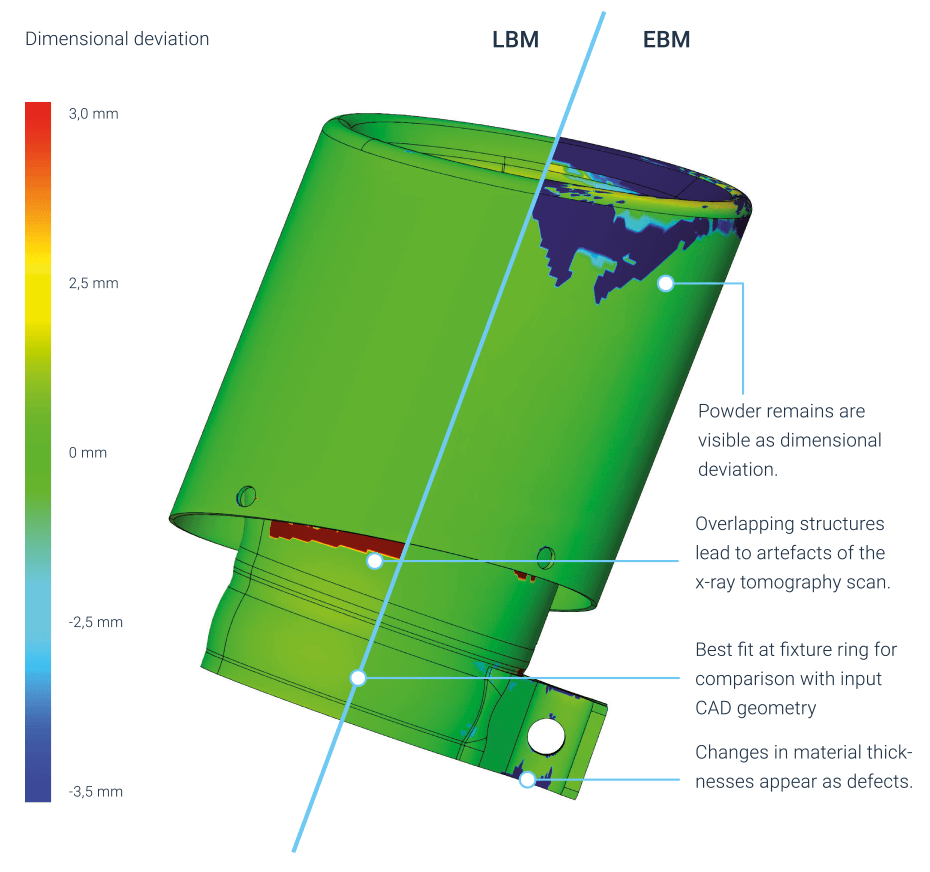Additive Manufacturing in Automotive
Medical and Aerospace companies count among the early adaptors of metal Additive Manufacturing. The usually highly innovative automotive industry, however, so far struggles with the high manufacturing cost of Additive Manufacturing. An exception are high performance cars with low production volumes and demand for customization.
In this second issue Ampower Insights provides a deep dive into the manufacturing route of high performance automotive components. Considering both Laser Beam Melting (LBM) and Electron Beam Melting (EBM), the study evaluates the manufacturing feasibility of a tail pipe blend along the whole process chain from data preparation to surface finishing.
Large influence of HIP process
The thin double walled structure of the tail pipe blend presents a challenge for the EBM technology. An x-ray tomography reveals large powder remains in part areas with limited access to blasting tools. The following hot isostatic pressing results in solidification of the powder remains and renders it impossible to remove.
The study analyzes the effect of process inherent distortion along the manufacturing route. X-ray tomography is used to reveal large part deformation after hot isostatic pressing if placed incorrectly. The results show that correct placement and orientation of the part during the process reduces such distortions.
Future Market Additive Manufacturing for Automotive
To finish the part both surface vibration grinding and micro machining are applied. As expected, the as build rough EBM surface proves to be challenging for both processes resulting in Ra values of around 3,6 μm. Using equal finishing operations on the LBM part yields a polished surface with Ra values below 0,1 μm.
The second Ampower Insights closes with an evaluation of the cost structure and lead time of the process chain including pre- and post-processing. The LBM technology proves to be more cost efficient, if multi laser systems are employed. The thin walled structure leads to lower effective build rates on the EBM machine. It turns out that the fast lead time of around 25 days is a game changing benefit of additively manufactured automotive parts such as the reviewed tail pipe blend compared to traditional tool-bound production.




